- News
- Reviews
- Bikes
- Accessories
- Accessories - misc
- Computer mounts
- Bags
- Bar ends
- Bike bags & cases
- Bottle cages
- Bottles
- Cameras
- Car racks
- Child seats
- Computers
- Glasses
- GPS units
- Helmets
- Lights - front
- Lights - rear
- Lights - sets
- Locks
- Mirrors
- Mudguards
- Racks
- Pumps & CO2 inflators
- Puncture kits
- Reflectives
- Smart watches
- Stands and racks
- Trailers
- Clothing
- Components
- Bar tape & grips
- Bottom brackets
- Brake & gear cables
- Brake & STI levers
- Brake pads & spares
- Brakes
- Cassettes & freewheels
- Chains
- Chainsets & chainrings
- Derailleurs - front
- Derailleurs - rear
- Forks
- Gear levers & shifters
- Groupsets
- Handlebars & extensions
- Headsets
- Hubs
- Inner tubes
- Pedals
- Quick releases & skewers
- Saddles
- Seatposts
- Stems
- Wheels
- Tyres
- Health, fitness and nutrition
- Tools and workshop
- Miscellaneous
- Cross country mountain bikes
- Tubeless valves
- Buyers Guides
- Features
- Forum
- Recommends
- Podcast
feature
Specialized Allez Sprint vs Trek Emonda ALR — which aluminium race bike will win this epic showdown?
A few years ago, it looked like alloy bikes were all but dead; however, in 2023 they still represent a very real and very competitive alternative to carbon.
With Trek’s latest aluminium road bike release a few weeks ago, the third generation Emonda ALR, two of the biggest brands in cycling, Trek and Specialized, now have bang-up-to-date performance aluminium bikes. But which is best? Here's a closer look at the weights, specs and geometry to help you decide which is best for you...
Alloy bikes are back!
There was a point in time, roughly five years ago, when carbon performance machines were getting cheaper and cheaper. Having an aluminium bike often meant sacrificing either aerodynamics, weight, comfort, tyre clearance or in some cases a combination of all of the above!
> Opinion: "Aluminium frames are the work of the devil"
However, in the last few years, we’ve since seen a resurgence of bikes made of metal and not just at the lower end of brand's ranges. I was so impressed with the recent development in alloy tech that when purchasing a bike for racing, training and filming on, I opted for this Specialized Allez Sprint.
> Staff Bikes: Jamie's custom Specialized Allez Sprint Disc
Trek, eager to not be left behind, has brought its Emonda ALR bang up to date with this third generation featuring Kammtail aero tubing and fully integrated cables.
Trek claims that it’s “affordable, ultra-lightweight and faster than ever”, but is it good enough to beat the Allez Sprint? Let’s find out if I should have waited before spending my hard-earned cash on an alloy superbike...
A closer look at the frames
> Best road bikes 2023 — find your perfect drop bar bike whatever your budget
Call me vain, but a big part of any of my bike purchasing decisions comes down to looks. I personally think it’s important to like what you’re riding. After all, morale will make a far bigger difference to your riding ability than most other marginal gains!
Welding
The Allez’ looks are perhaps not its strong point... just look at these welds! Specialized claims that “smartwelding” its hydroformed tubes together is both stronger and results in a lighter bike (more on that further down the page).
Trek, meanwhile, uses its “invisible” weld technology, Okay, ‘invisible’ might be pushing it, but the welds are certainly inconspicuous at first glance.
The welds at the bottom of the seat stays are noticeable if you go looking, but the head tube and seat tube junctions do look almost like carbon, which I guess is the impression that Trek is shooting for.
Integrated cables
Like them or loath them, both of the bikes now fully integrate their cables; however, from the factory both use very similar designs where the brake hoses and gear cables (if required) run under the stem, and then into the frame via holes in the headset bearing cover at the top of the head tube (as shown on the Emonda above).
They then pass through the upper headset bearing and then down the downtube to the mechs and rear brake.
This has both pros and cons. Both manufacturers claim an aero advantage, although neither specifies how much. We’d suggest in the region of 2-3 watts at 40kph, i.e. negligible for most riders. It does arguably look neater though…
Obviously, the negatives of such a design are going to be set up and serviceability. If your headset bearings need replacing, then that’s a few hours of yours or your mechanic's life that can't be got back! And the trickier routing will drive many riders to a bike shop.
If you’re looking for a bike that forgoes the additional hassle of integrated lines, then neither of these bikes is for you. I’d suggest keeping your eye out for a previous generation of either.
Tube shapes
As previously mentioned, Trek has moved away from its more traditional tube shapes and gone for Kammtail tubing, where the trailing edge of the tube is squared off. This should be more aerodynamic than the previous generation Emonda, but without a wind tunnel, we're unable to validate this claim. Which do you think is the prettier bike though? Let us know in the comments section below as always.
The Allez also utilizes Kammtail tube profiles, perhaps to an even greater degree as the seat tube and seatpost are not round either. This means that on the Allez, you do have to use the proprietary seatpost which happens to be the same as on the Tarmac SL7.
Colour options
When talking about colour schemes, it’s the Allez that rules the roost. In the UK the Allez is available in four new colours for the frameset in 2023 (shown above) and a further two colours for the full bike. Add on the eight from last year that you can, at the time of writing, still find in shops, and you have a huge variety from subtle to proper garish.
Trek, meanwhile, offers the latest Emonda ALR in four colour schemes two for the ALR 6 (shown above), and a further two for the ALR 5 including the blue and orange that we have. Even I can do the maths on that one, it's just four colour schemes for now. It has to be said that the two black ones are pretty similar.
Geometry
Trek has moved the ALR bikes from their H2 fit to H1.5. Back in the olden days, Trek gave you the option of an aggressive H1 fit or a more relaxed H2 fit on its performance-focused road bikes. This new H1.5 splits the difference really, and is what you’ll find on both Madones and carbon Émondas too.
Trek calls this “an optimised race-specific geometry [that] puts riders in the right position for power while minimising aero losses”.
It has to be said, the geometry of both bikes is very similar. Both are designed to be low-slung race bikes to help you cut through the wind and flick through turns in a criterium race.
> How to read a bike geometry table: the numbers made easy
In a size 54cm, you’ll find that the Specialized has a 1mm longer reach, a 4mm lower stack height, and a 2mm shorter wheelbase. If anything then, the Allez is probably the slightly more aggressive bike; but it really is marginal and we’re splitting hairs.
Both bikes also handle very similarly. They have exactly the same headtube angle, which means the steering is all but identical, and just 0.3 degrees difference in seat tube angle means that you get the same level of twitchiness/high-speed stability out of both.
The bottom bracket drop is also very similar on both bikes (that’s the distance between the bottom bracket and an imaginary straight line between the wheel axles). This is often the difference between feeling that you’re sat on the bike or 'in' the bike. It’s 70mm on the Trek and 72mm on the Spesh, making you feel slightly more 'inside' the Allez, but again it's marginal.
If you haven’t gathered by now, the bikes are vastly similar in geometry, and the minor differences that there are can be easily counteracted with different bar, stem and saddle positions. Arguably the biggest difference that I’ve found is the standover height. It’s a whopping 21mm more on the Allez.
This does mean that for the same saddle height, you’ll get more exposed seatpost on the Emonda, which means there’s more space for it to flex. That results in good rear-end comfort, especially with a carbon post.
So, to summarise, you can’t make a decision about which one is best for you based on geometry; but you should be aware that both are pretty aggressive and have the fast handling characteristics nailed. If you’re looking for something more relaxed, cruisy and arguably more comfortable, then you should look at something like a sportive or endurance bike.
Weight
> 8 cheap ways to get a lighter bike — save a kilo or more
Let’s see if we can split the two bikes apart a bit more on the scales. Both claim to have a focus on weight, but this is still an area where you will get a performance advantage from carbon. That said, the bike industry is becoming more and more aware that weight isn’t all it’s cracked up to be unless you’re climbing mountains on the regular.
The framesets are easiest to compare. It's 1,257g for the Trek and then 406g for the fork. This is the painted weight.
The Allez, meanwhile, has a slightly heavier 440g fork, but we weighed our 54cm frame at 1,198g (painted) so slightly lighter. That gives the Spesh a total weight of 1,638g and the Trek is 1,663g. It looks like we’re not splitting them here either.
Tyre clearance and bottom brackets
One area that you will find a difference is with tyre clearance. The new Emonda has a claimed maximum tyre size of 28c, which is actually quite small compared to many recent bikes. The Allez, meanwhile, has a claimed 32mm clearance, so if you’re looking to ride around on larger rubber then there’s a clear winner in this regard.
Does this make a world of difference? Well for many riders, it won’t make the slightest bit of difference. You can still use many of the latest super-wide wheelsets, and most racers I know won’t touch anything wider than a 28mm tyre.
> How to choose the best width road tyres for your riding
For me though, this is a contributing factor. I now race on 28mm tyres, but during the winter I’ve been training on a set of 30mm wide tyres. I do have a sneaky suspicion that they would fit in the Trek, but it’s clear that the Allez is the more spacious of the two bikes.
Moving towards the bottom bracket area, and things once again get quite similar. Like on many of the recent bike releases, you’ll find a threaded bottom bracket on both. This is sure to stir up a conversation, but as far as comparisons go they’re pretty similar.
> Bottom brackets - get the insider info on your bike's beefiest bearing
Like all of the modern Trek bikes, the Emonda ALR gets a T47 threaded bottom bracket. Like many of the latest Specialized bikes, the Allez Sprint gets a threaded BSA. Is one better than the other> In my experience, no. They both do a very similar job: a bearing cup threads into each side of the frame, and each is compatible with just about every road crankset that you’d want to use, from Shimano Hollowtech to SRAM’s DUB spindles.
Oh and if you’re looking to purchase one of these as a winter race or training bike, then I’m afraid you might be disappointed. Neither has mudguard mounts.
Prices and specifications
While all of the above features are very important, there’s obviously going to be one major factor determining most people's bike choice, and that is the price.
So, framesets only first. The Allez comes in at £1,600 and that includes the seatpost, thru-axles and a few bits and bobs in the bag, but not as many as you might expect. You don't get grommets for fitting a Di2 electronic groupset, for example.
The Trek, meanwhile, seriously undercuts that at £1,300; although you will need to factor in a seatpost, as unlike the Allez it doesn’t ship with one. Even so, a decent quality carbon seatpost to fit the standard 27.2mm frame will likely set you back in the region of £100, which still makes the Emonda £200 cheaper than the Allez.
Trek says in its press release that "leaves riders with enough cash to spend on sweet new kits, race registrations and post-ride beers."
However, that’s not the end of the story. Most riders will of course want to purchase an entire bike rather than just a lump of metal. If that’s you, then you’ll be eager to hear that the new Emonda ALR comes in two build specs: the ALR 5 with a Shimano 105 R7000 11-speed mechanical groupset, Bontrager Paradigm SL wheels and a build weight of 8.8kg, and the ALR 6 that has Bontrager Paradigm Comp wheels, a Shimano 105 Di2 groupset and the same 8.8kg weight.
The ALR 5 build is now the lowest in the ALR range, because the ALR 4 has been ditched with this third generation. This means that complete bike builds start at £2,325 for the ALR 5, and the ALR 6 is £3,150.
> Review: Specialized Allez Sprint 2022
Meanwhile, the one and only Allez complete build is very similar to the ALR 5. Once again, the 105 mechanical groupset makes an appearance, and we weighed our review bike at 8.74kg. It currently retails in the UK for £2,600 so once again a little more than the Trek.
Both of those builds are let down by the weighty wheels, and that’s why I’ve switched out the Allez wheels to the new Roval Alpinist SLX wheels. Look out for our alloy wheel super shootout including these very soon to find out the most cost-effective alloy wheel upgrades from the likes of Hunt, Scribe, Mavic and Fulcrum.
Conclusion
> 2022 Specialized Allez Sprint vs Tarmac SL7: which is best?
So which one would I have? Well, I’ve already got the Allez, and to be honest the Trek is so similar that there’s not a chance I’m going through the hassle of switching the frame out.
The latest Emonda ALR is, however, the first aluminium performance bike that I’ve ridden that can stand shoulder-to-shoulder with the Allez in terms of that get-up-and-go feeling.
Its geometry is excellent, as is the ride feel, so as long as you like one of the few colour schemes then the £300 lower price tag makes it a serious consideration. I do think that Trek has missed a trick with the tyre clearance only being 28mm but one thing's for sure... alloy is back!
Look out for our full review of the Trek Emonda ALR5, coming soon. Let us know which one is your favourite in the comments section below...
Jamie has been riding bikes since a tender age but really caught the bug for racing and reviewing whilst studying towards a master's in Mechanical engineering at Swansea University. Having graduated, he decided he really quite liked working with bikes and is now a full-time addition to the road.cc team. When not writing about tech news or working on the Youtube channel, you can still find him racing local crits trying to cling on to his cat 2 licence...and missing every break going...
Latest Comments
- David9694 7 hours 27 min ago
Car crashes outside Poundland in Abingdon town centre...
- ktache 7 hours 41 min ago
I'm impressed by my DX1000, the keys look difficult for picking, though I'd like to seethe LPL having a go at one. And it definitely feels the part...
- dubwise 8 hours 55 min ago
So cyclists will be punished far heavier than killer drivers. Sums up the fkd up UK.
- HLaB 9 hours 8 min ago
I've done the 312 and other closed roads events like the Etape Caledonia and each time there is bad press like this in advance but on the day the...
- Rendel Harris 9 hours 8 min ago
It's not that surprising that Mr GrumpyGobshite hasn't seen the 20mph limit "stuck too [sic] in 47 years" as it was only reintroduced in 2004, it...
- Pub bike 9 hours 24 min ago
Spiral wound cables can expand and contract and possibly help with brake modulation, as well as make tighter bends. ...
- Burnsy Bhoy 10 hours 45 min ago
My TL200 rear light stopped working after 14 months - it seems IP ratings arent what they say on the tin! I have tried different brands and all...
- OnYerBike 16 hours 56 min ago
I've no idea what the situation is here, but I've seen plenty of "under construction" cycle lanes where there are only signs/barriers around the...
- the little onion 17 hours 3 min ago
whereas the whole point is that they didn't hit you this time
- Tom_77 17 hours 17 min ago
AIUI an entering-circulating accident [sic] would be when the vehicle entering the roundabout fails to give way to the vehicle circulating.
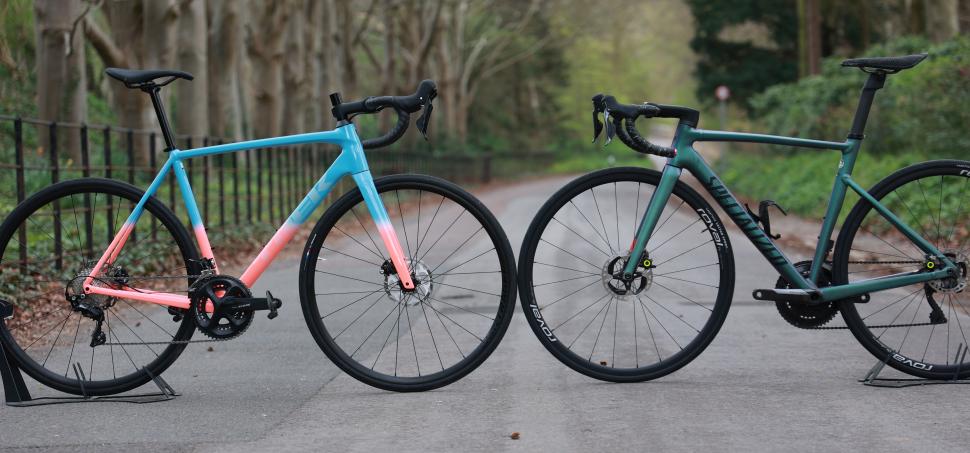
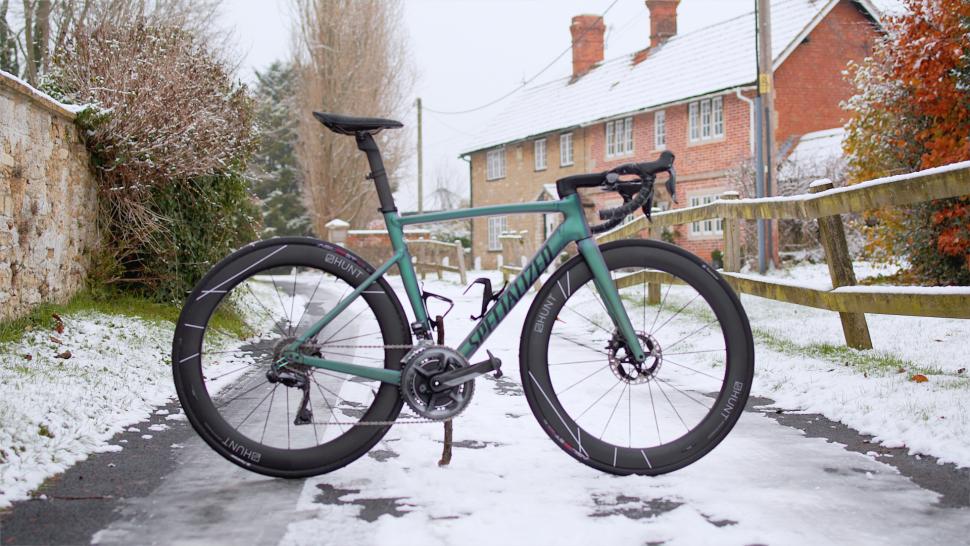
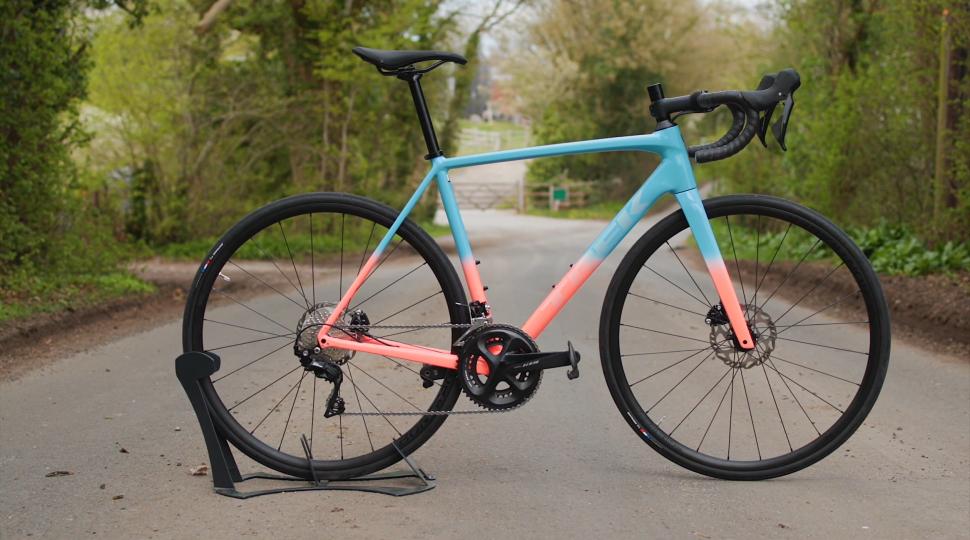


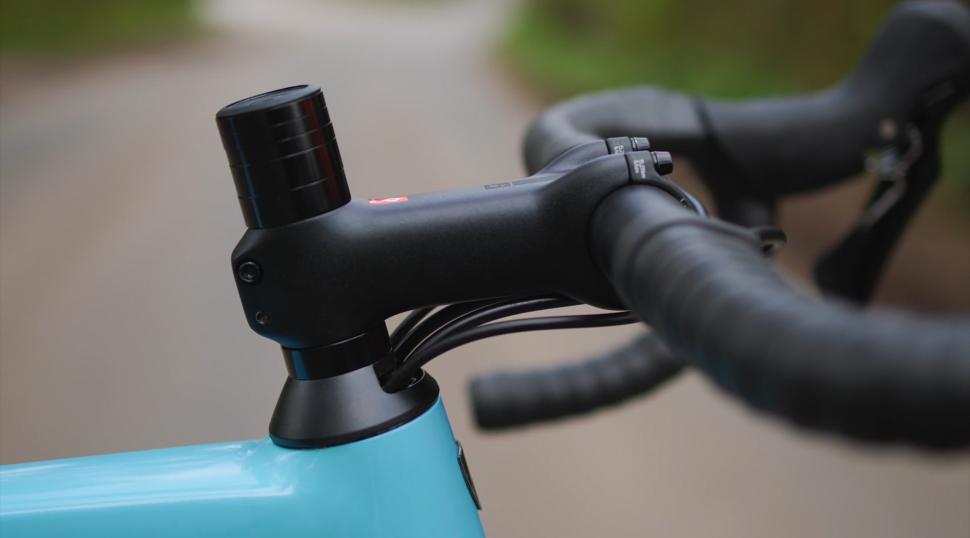

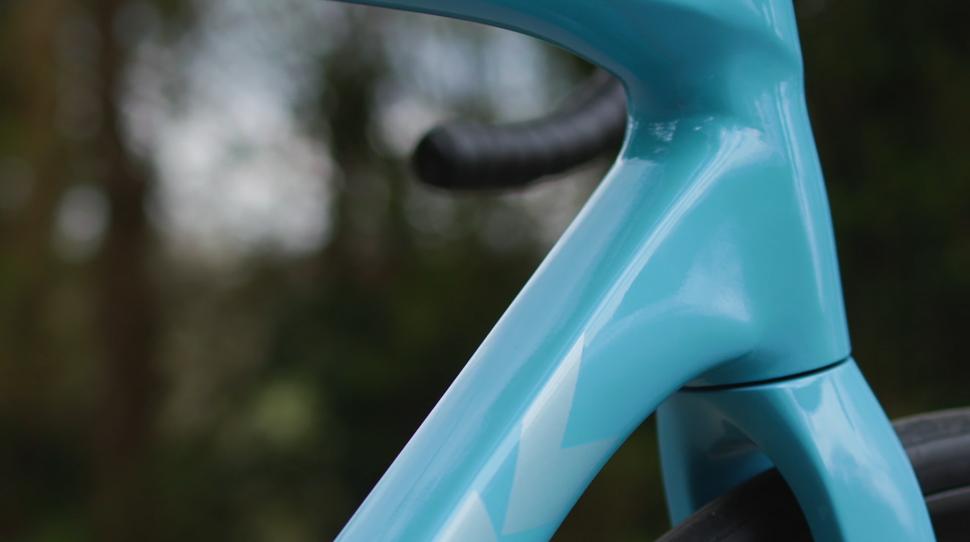

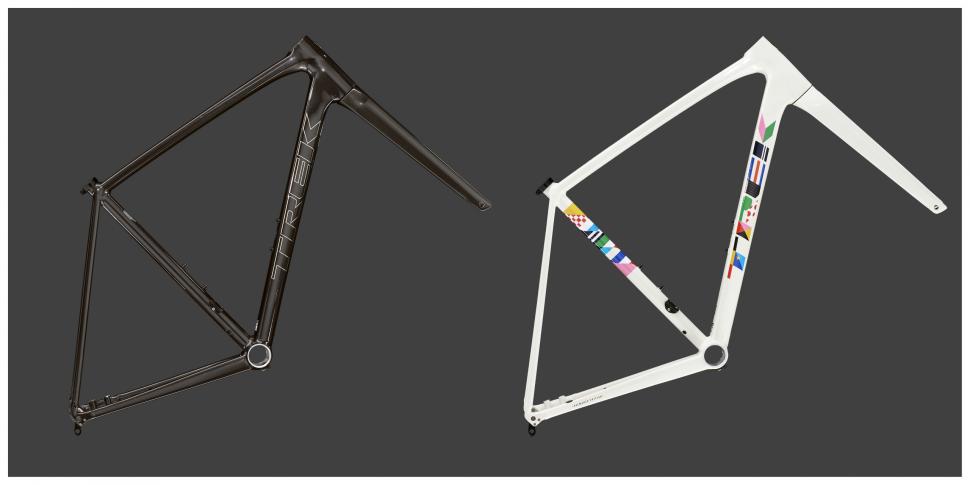
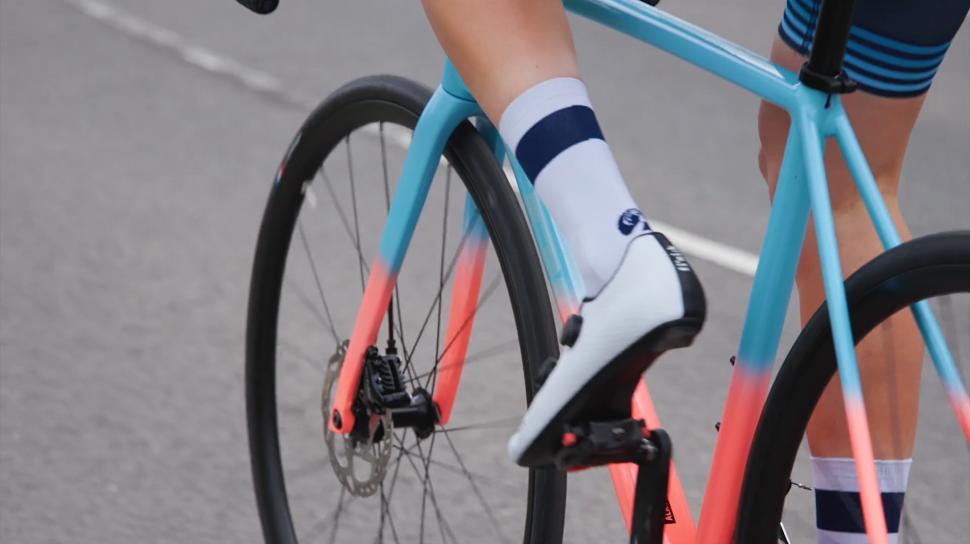

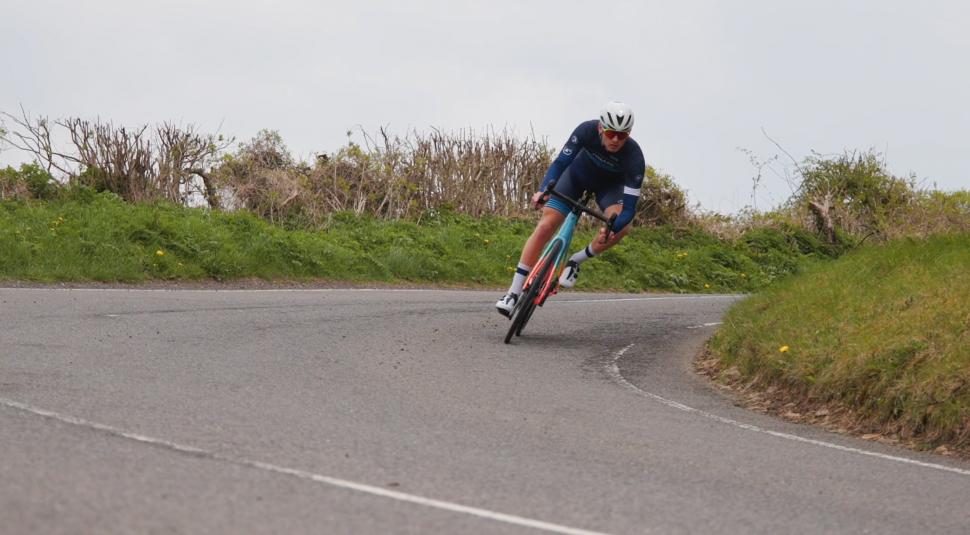

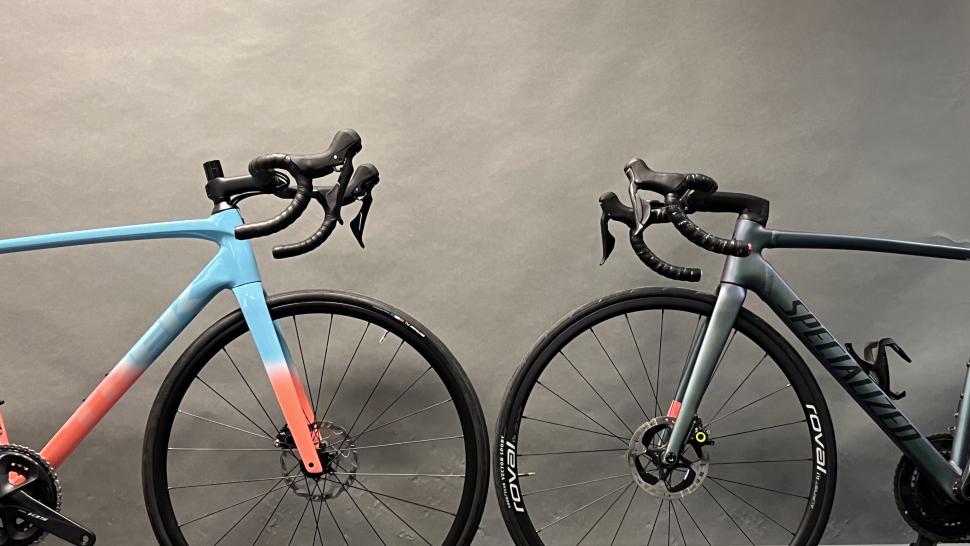
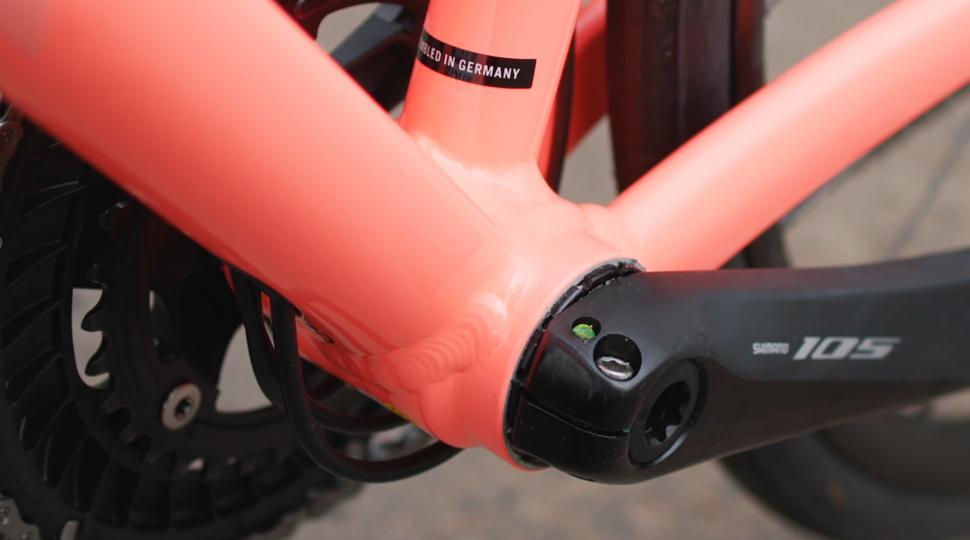



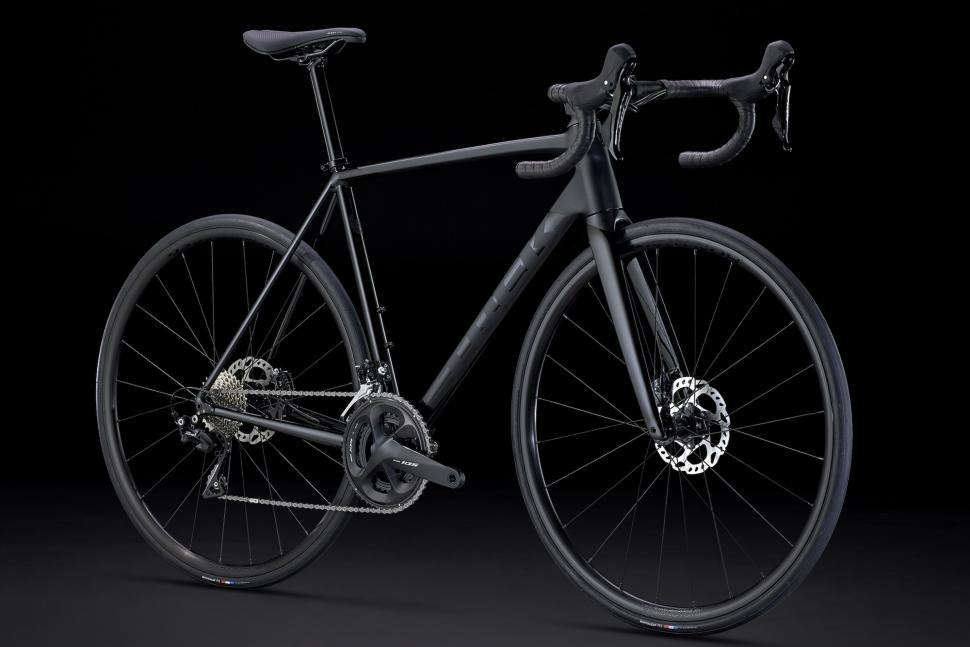
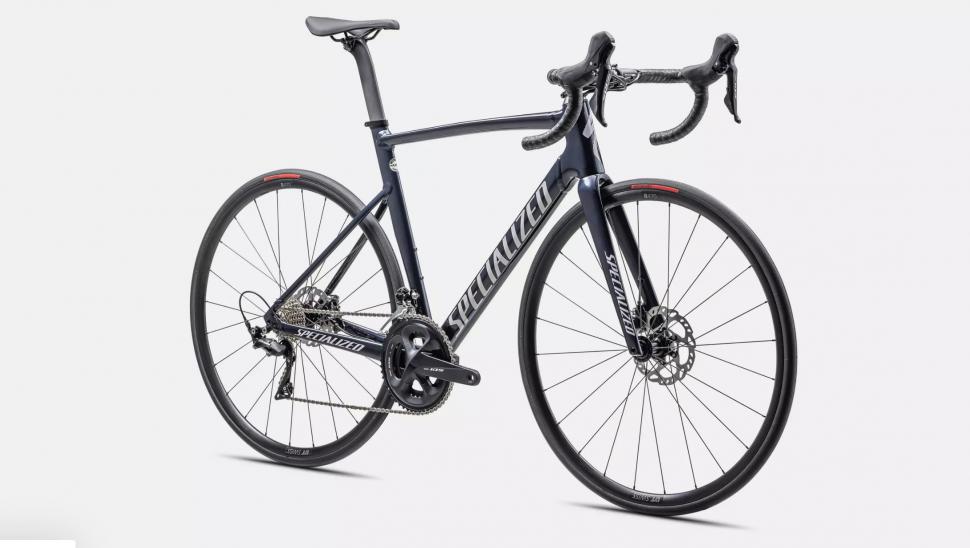
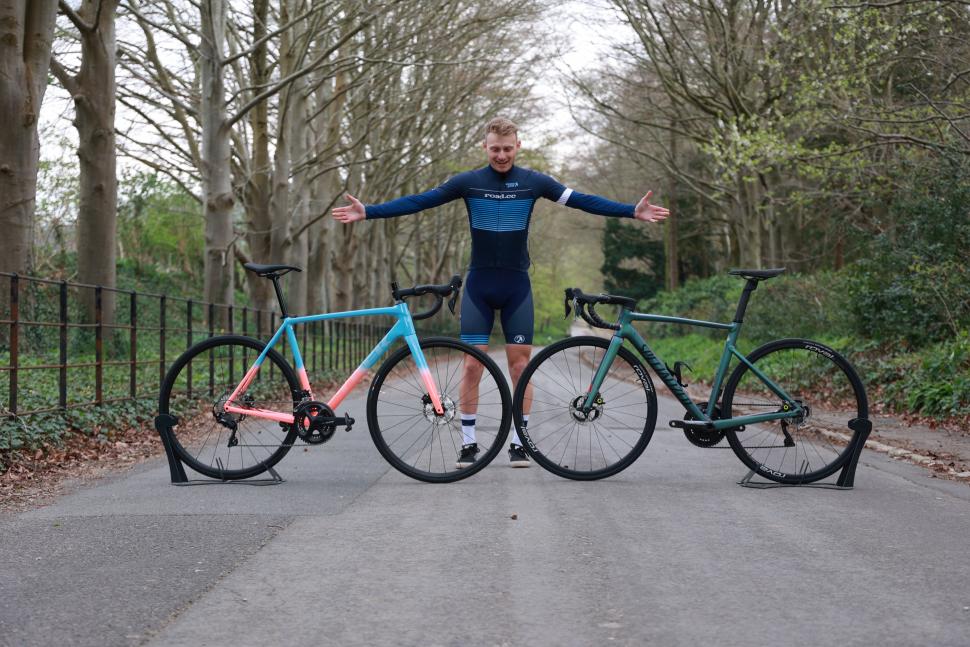
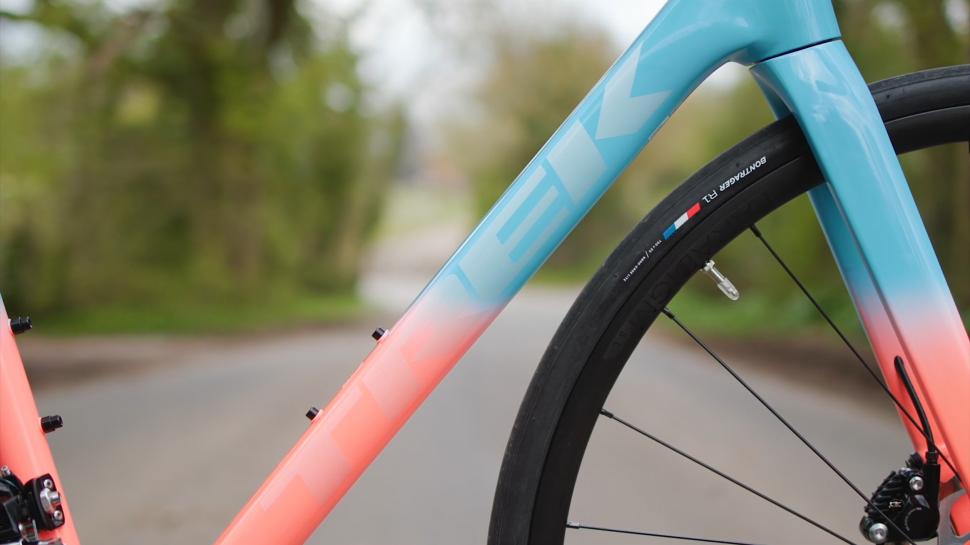
Add new comment
14 comments
Golly chucksneed got a hard time for having an opinion.
People who post with the intent of being a WUM do.
You don't actually think they believe anything they write?
I don’t know what a WUM is. I also wouldn’t know I should believe anything anyone writes. The point I made was as I stated, rhetorical is what it is.
WUM is internet shorthand for Wind Up Merchant.
The reaction to Chuck's EM needs to be seen in the context of the pattern of his comments, not just this one in isolation.
Generally I find his comments easy to ignore.
I'm all for aluminum and steel as it can be recycled whereas carbon will just end up as landfill.
landfill? Most local authorities are incenerating waste now, and generating electricity in the process.
Draw would work for me. Not fond of either brand.
Yet both will be outdone by a similarly priced, or even cheaper, carbon bike. 'Premium' aluminium bikes are a scam for people who want to tell everyone that they could have spent less and gotten a better and lighter bike, but chose not to
Or...alternative view. It's offering more customer choice of high end frame materials because lightness isn't the be all and end all you seem to think it is.
By your silly trolling definition (see what I did there) Mason and Kenesis and others shouldn't exist.
...
As an owner of several carbon bikes including an SL7 I'm well aware of its properties but my winter hacks, both MTB and road, are metal. It's so much more resilient to abuse in the dark, wet, muddy months. I'm really happy that brands are providing us with well specced, preformance metal offerings even though they don't provide the value they once did.
Well if you knew anything about bikes (which I think many of us here have established - YOU DON'T) The Trek Emonda SL5 which has an almost identical build from groupset to wheels is only marginally lighter than the Alu Emonda on test. It is also a grand more expensive. So the Alu Emonda is a very attractive proposition to anyone looking at the pricepoint it comes in at.
You can also get some absoloutly terrible carbon bikes. Carbon Fibre isnt some wonderful magical material. It has its limitations and that is where the skill of the designers come in. That is why a cheap chinese open mold frameset can cost a few hundred and a top end Colnago/S-Works/Cervelo/Pinarello etc etc will cost you 10 times more.
You also can get a brilliant Aluminium frame. This also can be said of steel and titanium. Its just a material and used right can make bike better than a carbon fibre one.
What about the latest CAAD?
This is a comparison of Specialized Allez Sprint vs Trek Emonda ALR, assisted by the fact that the reviewer owns the Allez Sprint. To find a review of the CAAD13, type "site:road.cc caad13" into an internet search engine such as Google.